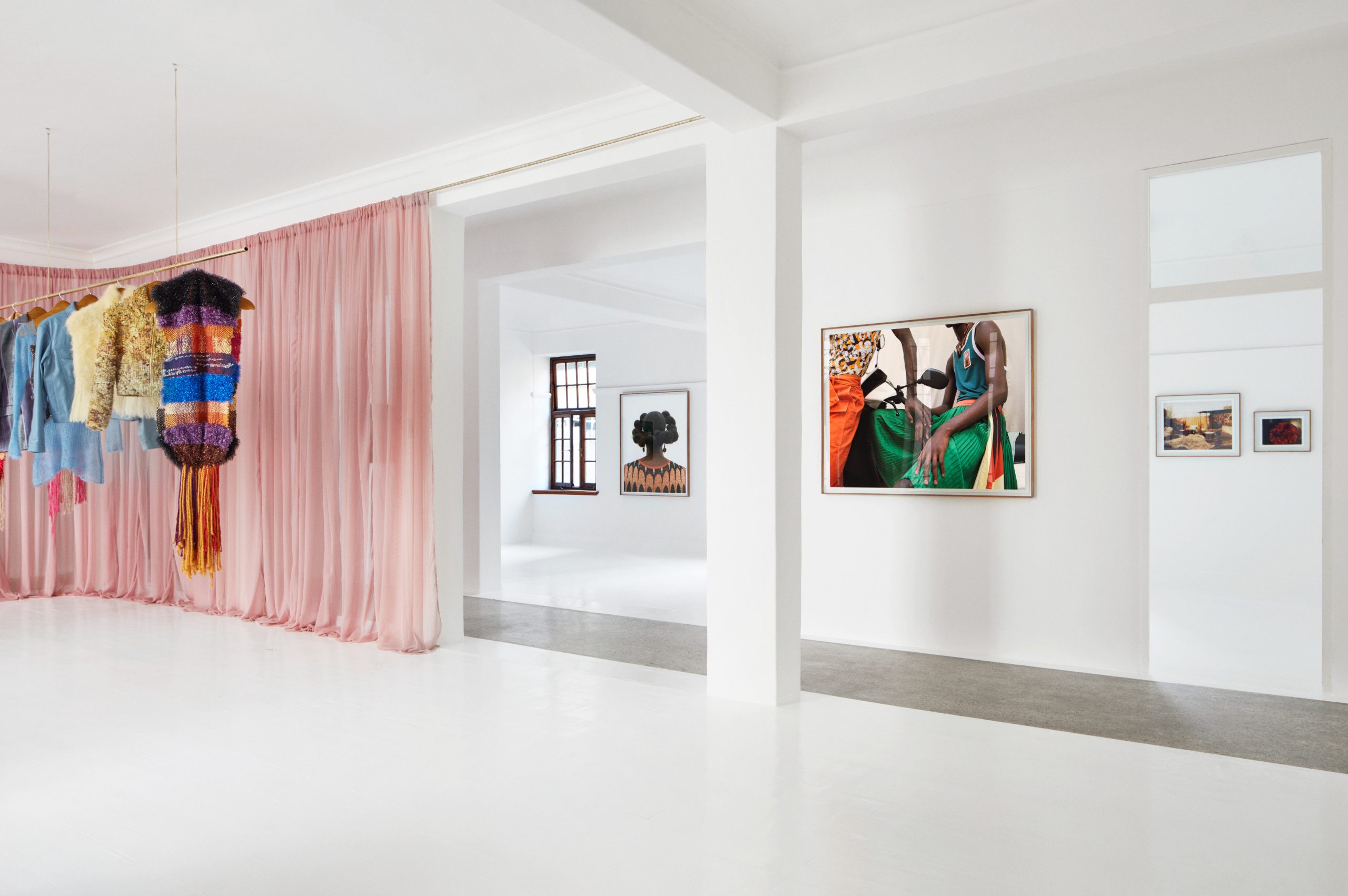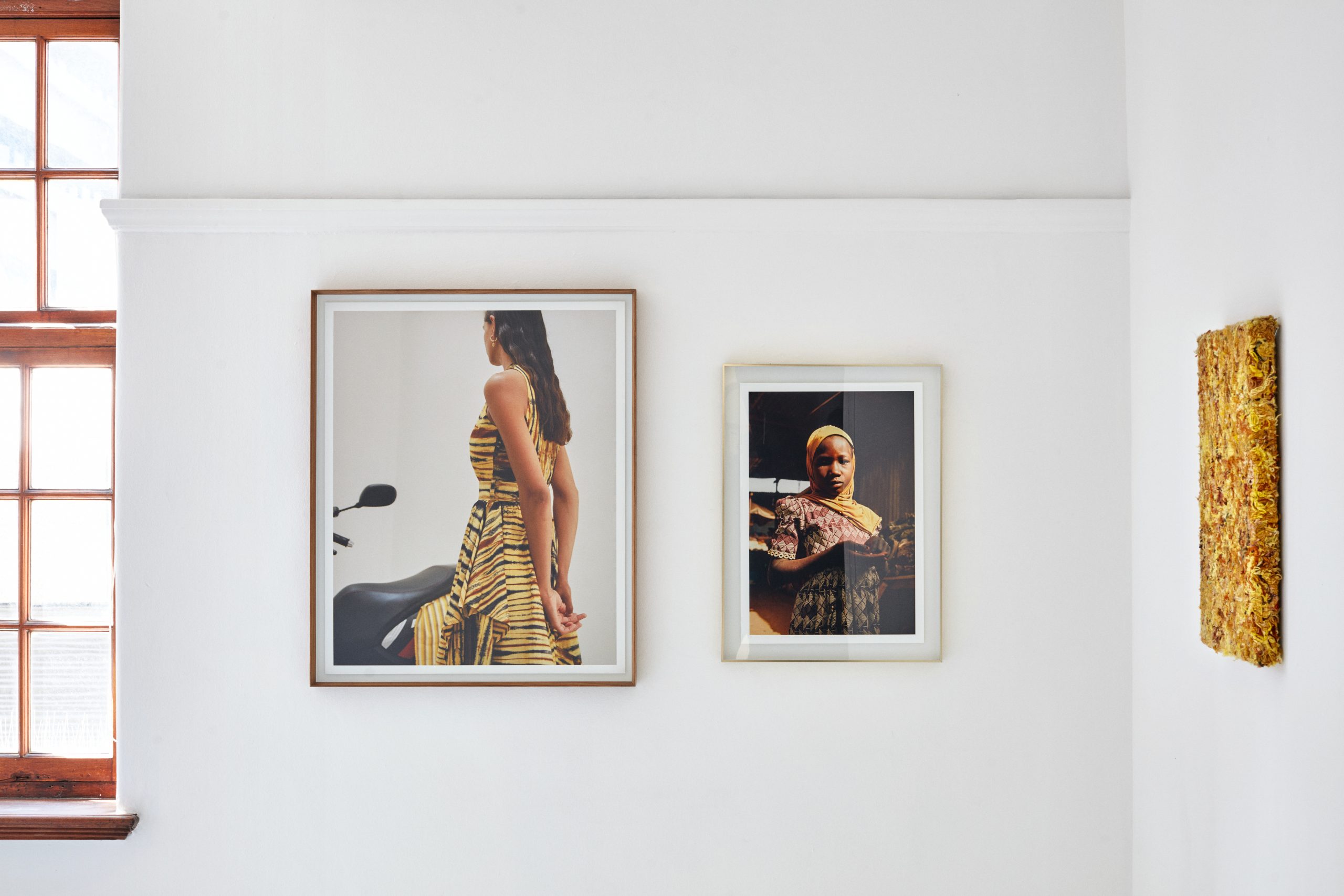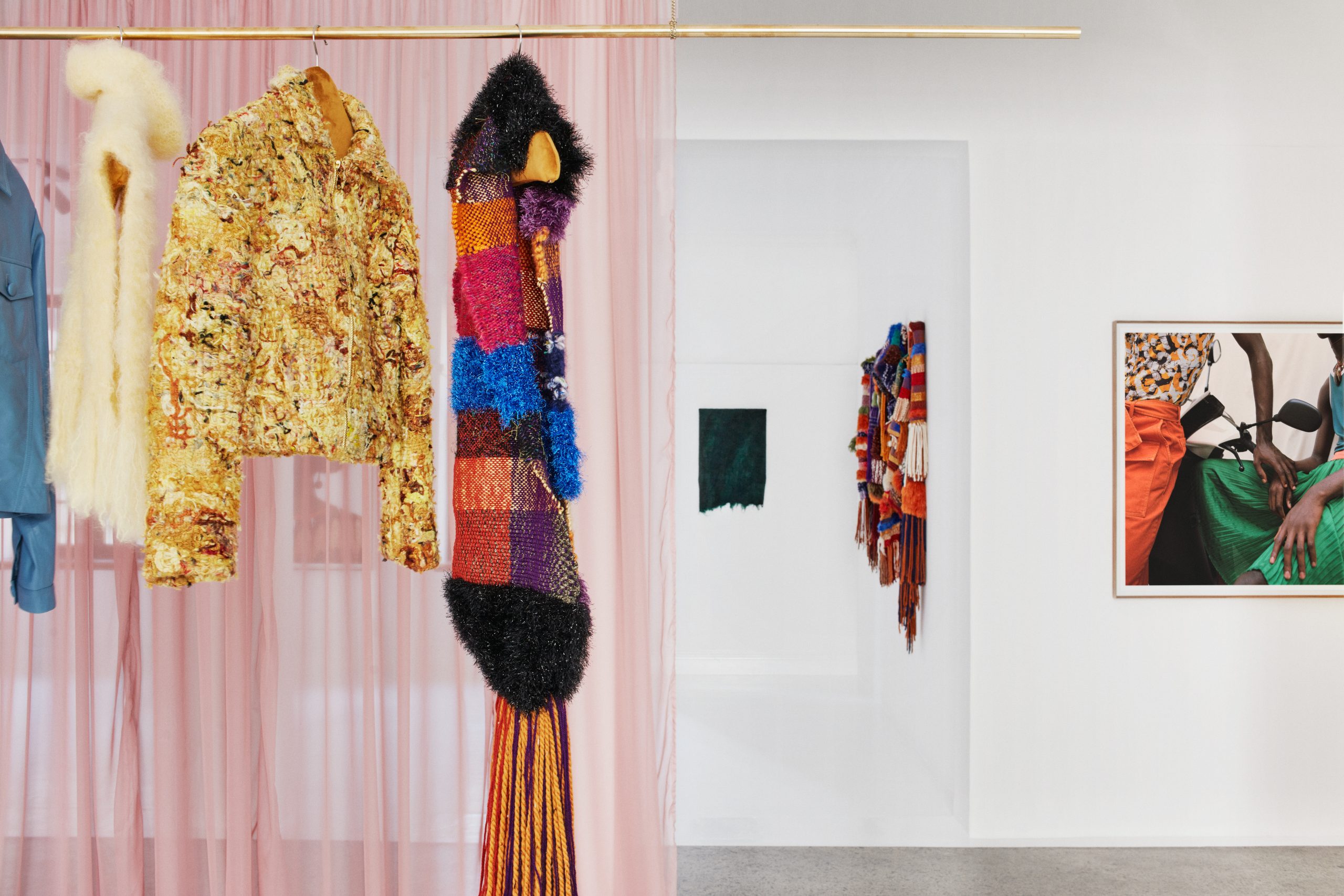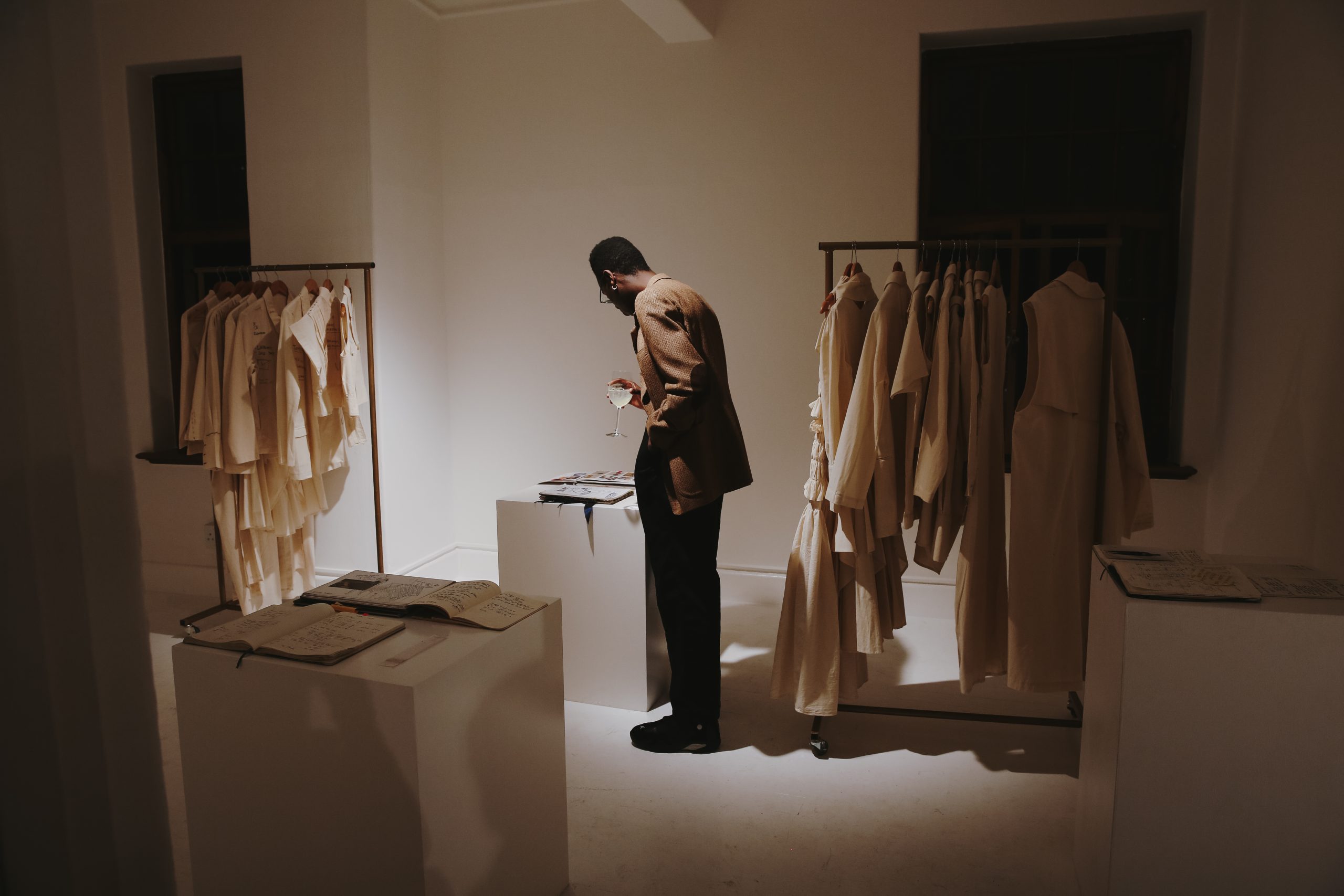If indeed — as American radio personality Ira Glass proposes — great stories happen to those who tell them, then Lukhanyo Mdingi is a phenomenal chronicler. His exhibition, The Provenance (Part I), presented at The Fourth Gallery in Cape Town is a freshly penned tale of connected and interconnecting loci; of the intersection between mediums, practitioners, places and journeys.
Co-curated by Morne Visagie and The Fourth Gallery, ‘The Provenance’ engages a vivid spectrum of colour, shape, form and texture. The exhibition reads like a collection of experiments that take the form of photography, film, music and fashion, pointing to any assumed conflict between disciplines as a mere illusion. In a sense, Mdingi reinterprets the format of the exhibition as a space for display and reconstitutes it into a space for contemplation, reflection and detailed study. The locus of his sensibility is connection. Each part has its place and leans on others in the most wonderful way.
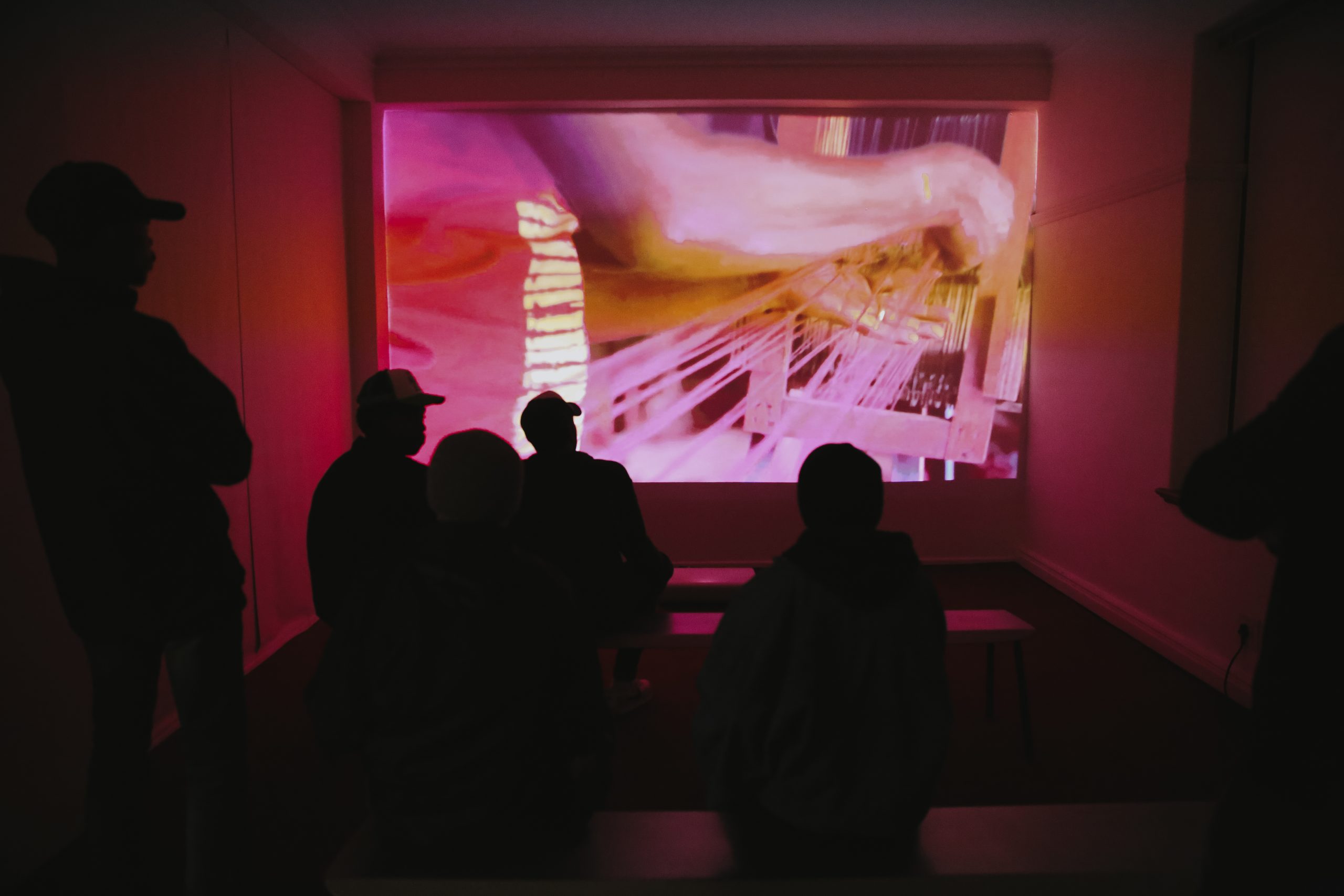
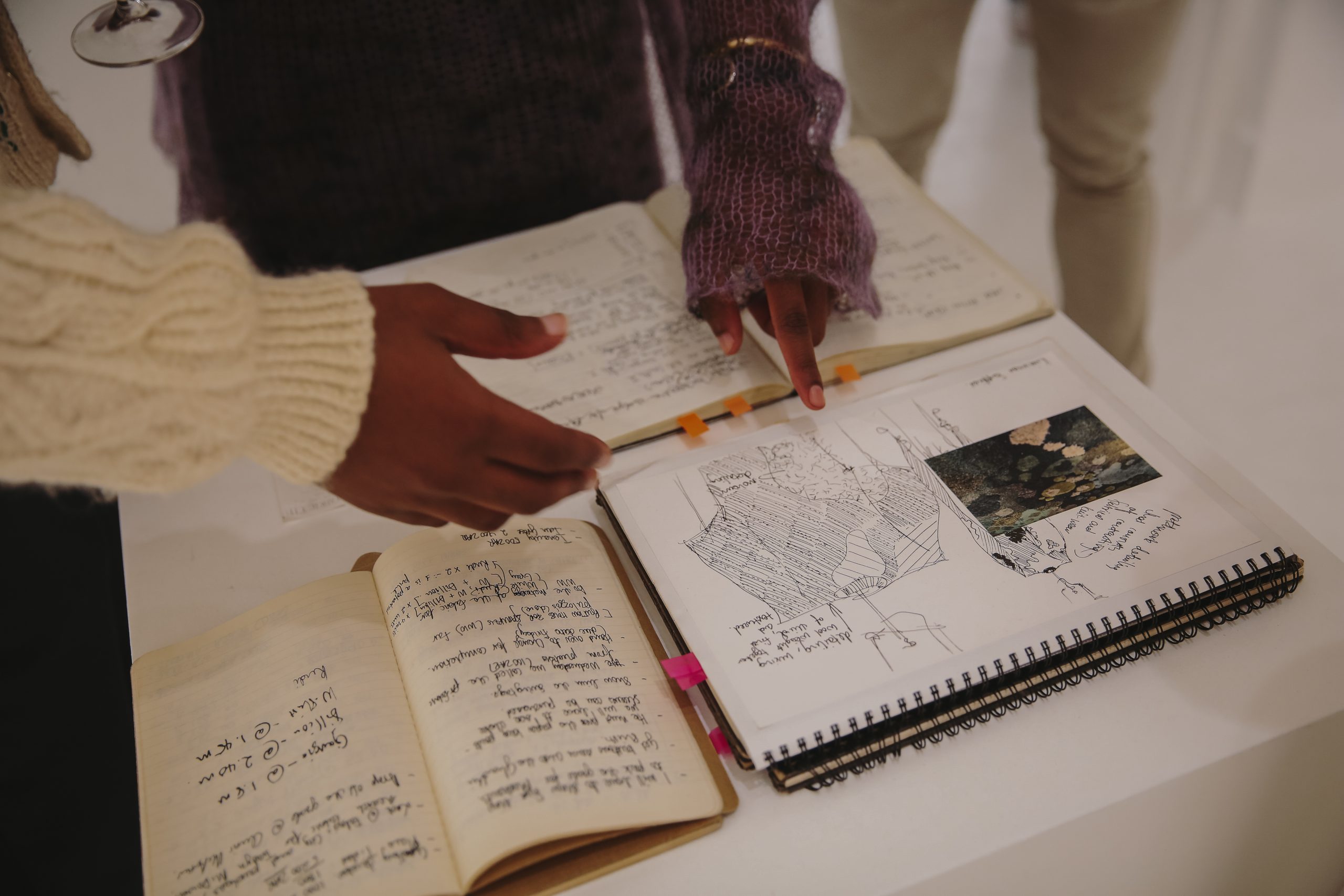
The recipient of the 2021 Karl Lagerfeld LVMH Prize, Mdingi illustrates his taste in style but also in ideas. Through the exhibition, he reveals the inner workings of his design practice with an openness that suggests real generosity. By uncloaking his creative process and putting it on display he reminds us that it’s a long way from the seed of an idea to its execution. Moodboards, technical sketches, fabric samples and prototypes are arranged in different rooms and reveal, in painstaking detail, the arduous process of making an article of clothing a reality. The exhibition captures the spirit of the brand and digs deep into its personality.
The notion of provenance is an interesting one — provenance is the place of origin or the earliest known history of a thing. And here I can’t help but think of what A4 director Josh Ginsburg refers to as soft provenance; “borrowed from the ‘provenance’ of an artwork — the history of ownership that becomes proof of authenticity and a measure of value — soft provenance is an adaptation that holds dear the touch-points along the path of a project within the peopled environment of the arts.” If we hold this definition in mind, we can reflect on Mdingi’s project as a showcasing of various touch-points which find anchorage in a peopled environment.
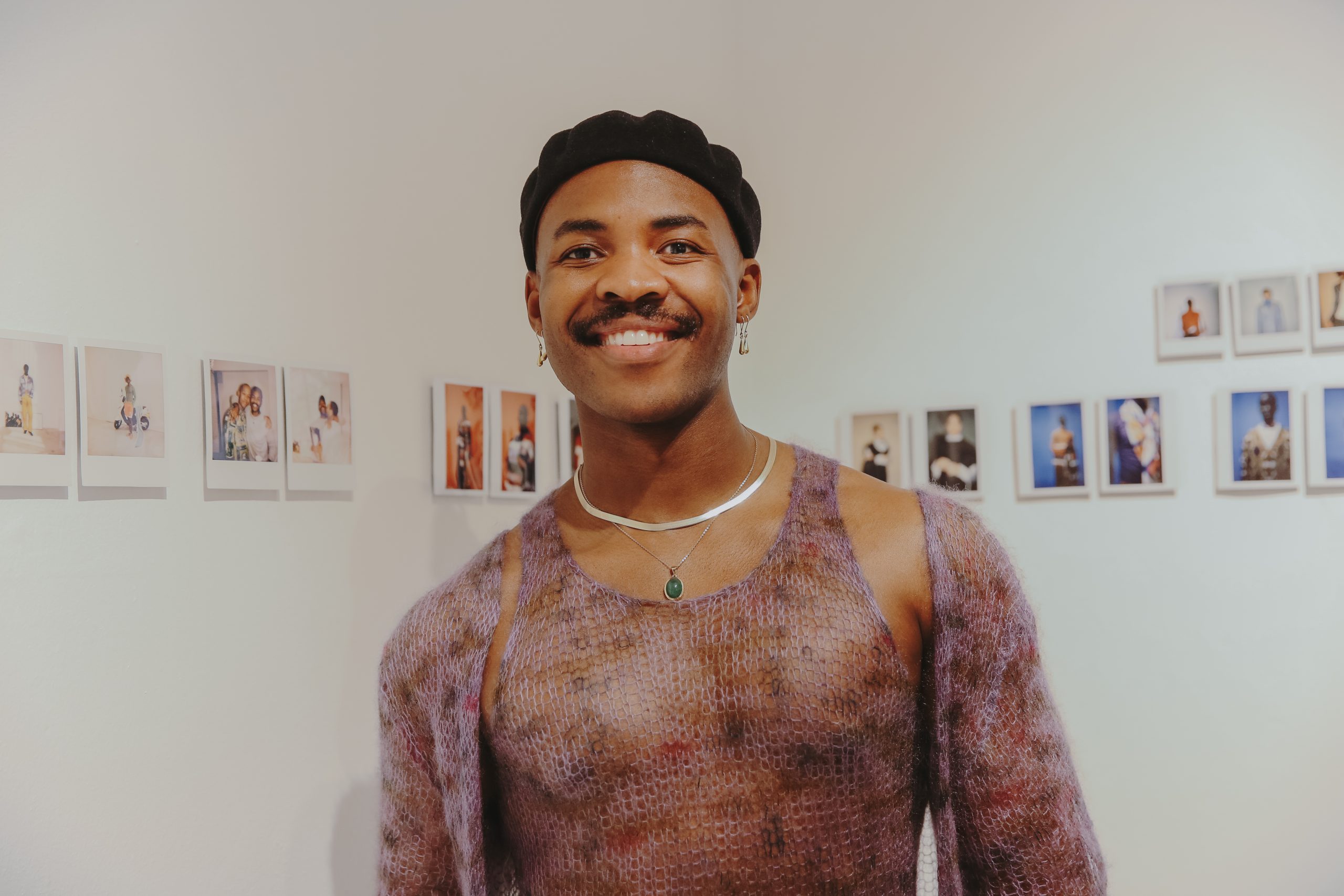
The priority is networks that encourage the sharing and exchange of ideas in the process of making. He weaves together sources of inspiration, muses, contemporaries, collaborators and co-creators — be it the crisp photography of Jhonathan Baena, the intimate portraiture of Luke Houba or the electrifying music of Desire Marea, Mdingi reminds us that he doesn’t travel alone. Part of the work is an homage to late designer Nicholas Coutts whose memory is honoured with a beautiful garment made with Angora Kid Mohair, cotton, Merino wool, metallic and acrylic yarn, as a way to think of friendship and love.
At the far end of the gallery is a projection of a handsome film detailing weaving techniques and practices inspired by the nation of Burkina Faso. Through the film, and the exhibition more broadly, Mdingi’s dogged pursuit of beauty and elegance through a mindful approach shines through. The work recalls the words of author Owen Jones in that, “true beauty results from that repose which the mind feels when the eye, the intellect, and the affections, are satisfied from the absence of any want.”
